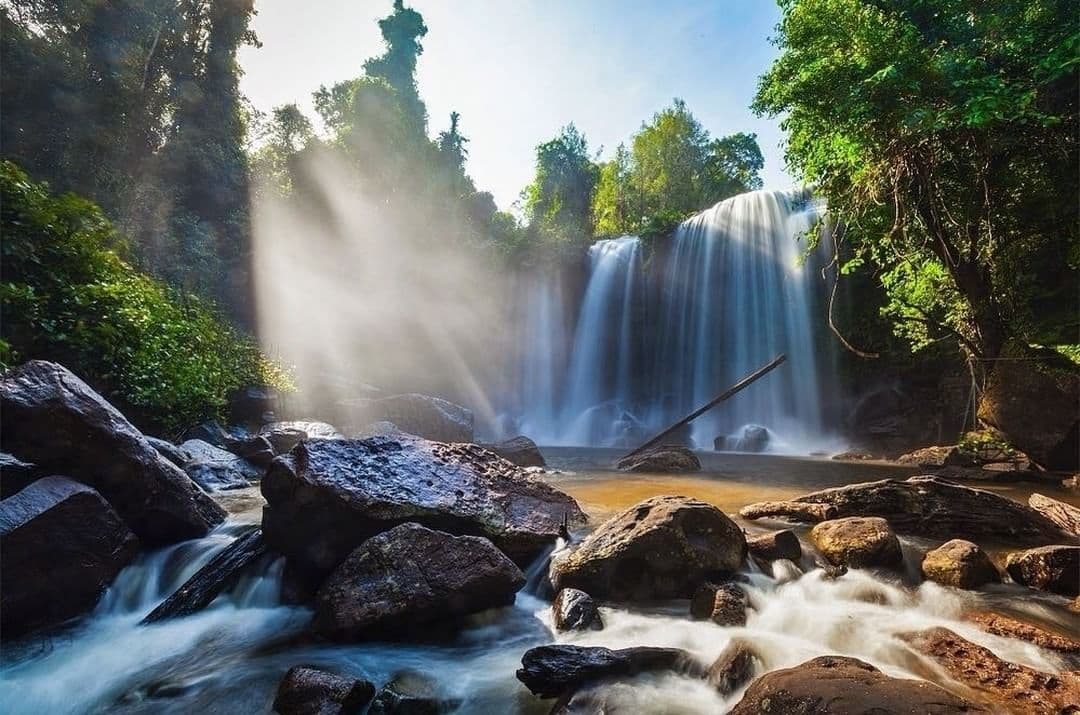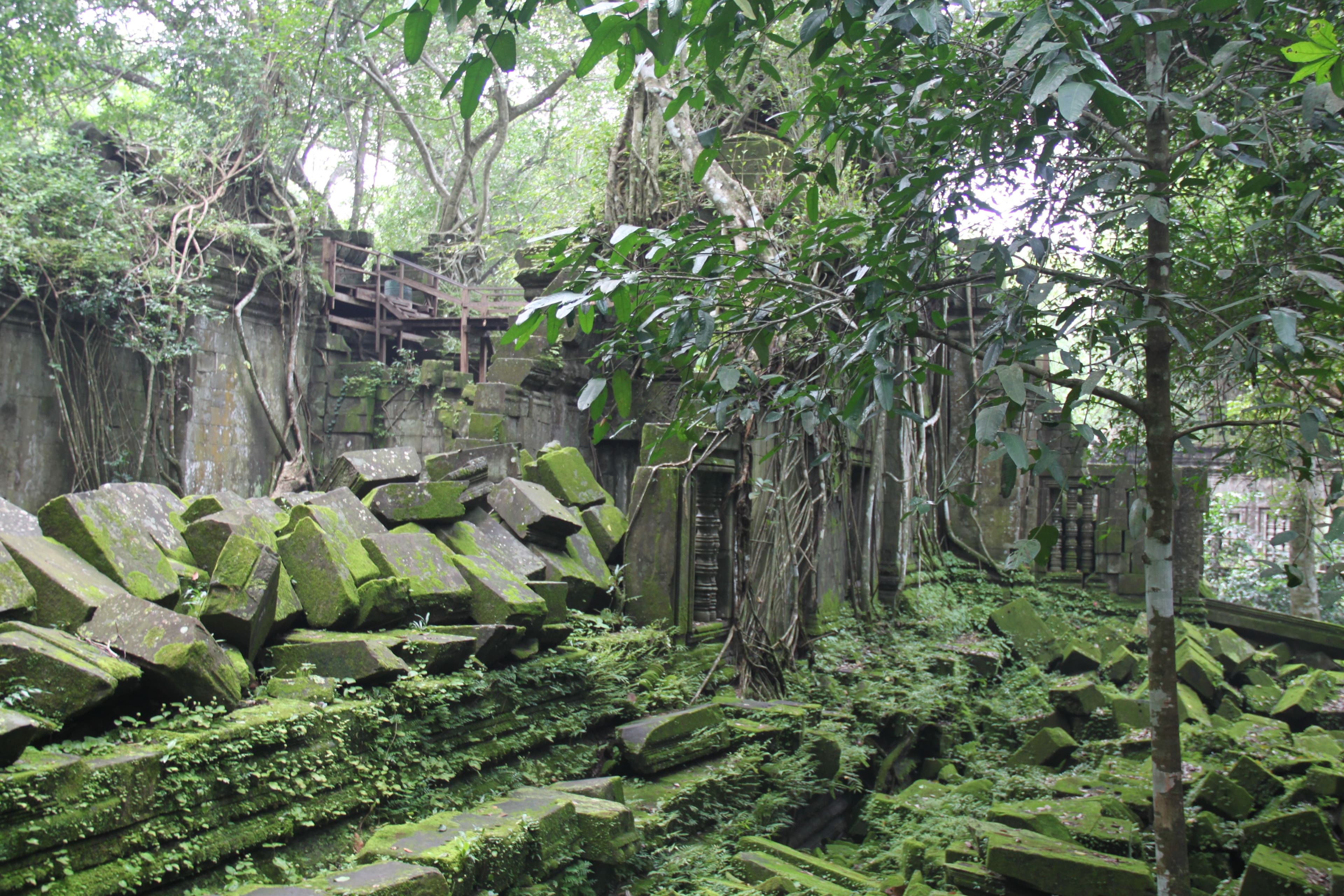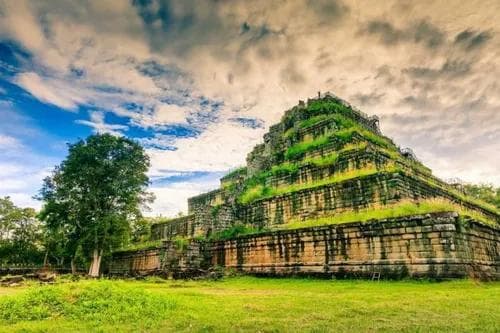SEIM REAP - GETAWAY
Private Luxury Angkor Wat at Sunrise
What you'll do
Detail a Day TourStart Tour Departure at 4:40 AM(Morning)We begin with a pre-dawn departure Enter the great temple in darkness from the little visited eastern side to see the most beautiful Angkor Wat Sunrise, and creep along hoary cloistered corridors past the longest stretch of bas-relief carvings in the world.At 9:00AM after breakfast we continue to Ta Prohm Temple One of the most atmospheric of all temples in Angkor. One homes to 2,740 monks, Ta Prohm today looks much as is did in the early 1850s, when French explorer Henri Mouhot 'Rediscovered' this crumbling site. After exploring the maze-like interior of Ta Prohm. 10:00AM Explore of the elephant Terrace, the 350m-long Terrace of Elephants was used as a giant reviewing stand for public ceremonies and served as a base for the king's grand audience hall.At 11:30AM Continue to Bayon Temple, Angkor Thom, Angkor Thom is the majestic site once served as the Khmer Empire's glistening capital city. Take a moment to consider its grandiosity before venturing inside the city. At 12:30PM We Continue to the south gate of Angkor Thom is the best preserved. It is approached from outside via a causeway that extends about fitty meters across a moat. Then return to your hotel after a long but fulfilling day, which will leave you with a lifetime of memories of one of the wonders of the world. Special request can be customized.A Full Day Tour Activity
Start: 5:00 AMEnded: Approx:1PMPick Up & Drop Off _Your HotelPrice Includes
- Breakfast at Local Restaurant
- Transportation (Air-condition Car or Minivan - will arrange tuk tuk if guest requested)
- Professional English Speaking Tour Guide
- Cool drinking water and towels
Price Exclude
- Angkor Pass 37USD/person covers all the temples
- Own Expend



10 Mind-blowing facts when you visit Cambodia
1. Angkor Wat Is Featured on the Cambodian FlagSince around 1850, Angkor Wat has been featured in the center of the national flag of Cambodia, as if to show their incredible pride in the ancient monument. Their pride is also reflected by putting images from Angkor Wat on many denominations of the riel (Cambodia's currency).
2. Angkor Wat Means "City of Temples" in KhmerIn Khmer, the Cambodian language, Angkor means "city" or "capital city", and Wat means "temple grounds". So Angkor Wat means "Temple City" or "City of Temples". Its original name was Vrah Vishnuloka or Parama Vishnuloka, meaning the sacred dwelling of Vishnu in Sanskrit.
3. Angkor Wat Was Shared by Two ReligionsIt was originally built as a Hindu temple dedicated to the god Vishnu, breaking the previous kings' tradition of worshiping Shaiva. It gradually turned into a Buddhist temple towards the end of the 12th century and is still used for worship today.
4. Angkor Wat Was Built as A Representation of Mount Meru
Mount Meru, in Hindu Mythology, is the sacred five-peaked mountain standing in the center of the universe. It's said that the three Hindu chief gods - Brahma (the Creator), Vishnu (the Preserver) and Shiva (the Destroyer), and Hindu demi-gods (Devas) reside on the top of this mountain.
5. Angkor Wat is Typically Related to Death in Hinduism
Unlike most Angkorian temples which are commonly directed to the east, Angkor Wat is oriented to the west, a direction associated with death in Hindu culture. So, many archaeologists and scholars have concluded that Suryavarman intended to use it as a funerary temple.
Also, the direction means it faces the sunset, which adds to its beauty and attracts many visitors at this time.
6. The Bas-Reliefs at Angkor Wat Read Counterclockwise
which is the reverse of the normal order, and is thought to be another indication that the temple is associated with funeral rituals.
7. Five Million Tons of Sandstone Were Used to Build Angkor Wat
The sandstone blocks used were quarried from the holy mountain of Phnom Kulen around 50 kilometers/31 miles away from the site. The heaviest block weighs up to 1,500 kilograms / 3300 pounds, so the logistics of moving this sandstone are mind-blowing and must have been extremely labor-consuming. The workers had to get creative, which is why it's thought that the sandstone was transported to the Siem Reap River using canals and then floated down the river on rafts.
8. The Vast Numbers That Make Up Angkor Wat
According to inscriptions, the construction of Angkor Wat is thought to have taken approximately 30 years, 300,000 laborers and 6,000 elephants. Angkor Wat was initially designed and constructed in the first half of the 12th century, during the reign of Suryavarman II (ruled 1113 – c. 1150), as the king's state temple and capital city. It was built without the aid of any machinery, as there was no machinery available at that time.
9. The Walls Are Decorated With Thousands of Bas-Reliefs
The bas-reliefs on the walls represent important deities and figures in the Hindu and Buddhist religions and key events in their narrative tradition.
10. Angkor Wat Is the Largest Religious Monument on the Planet
Angkor Wat is spread across over 400 acres/1.6 km², and is said to be the largest religious monument in the world. It was listed as a UNESCO World Heritage Site in 1992, which encouraged an international effort to save the complex.
Please pack your bags and get ready for an unforgettable siem reap - getaway!
Contact
Related Tour Package

KULEN MOUNTAIN ONLY
Kulen Mountain, Siem Reap
Starting from: $99.45

ANGKOR WAT TOUR & KULEN MOUNTAIN PLUS CITY TOUR
Kulen Mountain, Siem Reap
Starting from: $120.12

HALF DAY BENG MEALEA
Beng Mealea , Siem Reap
Starting from: $129.99

KOH KER & BENG MEALEA TEMPLE
Koh Ker is western side of Preah Vihear province around 20km east of the border with Siem Reap Province, Siem Reap
Starting from: $200
